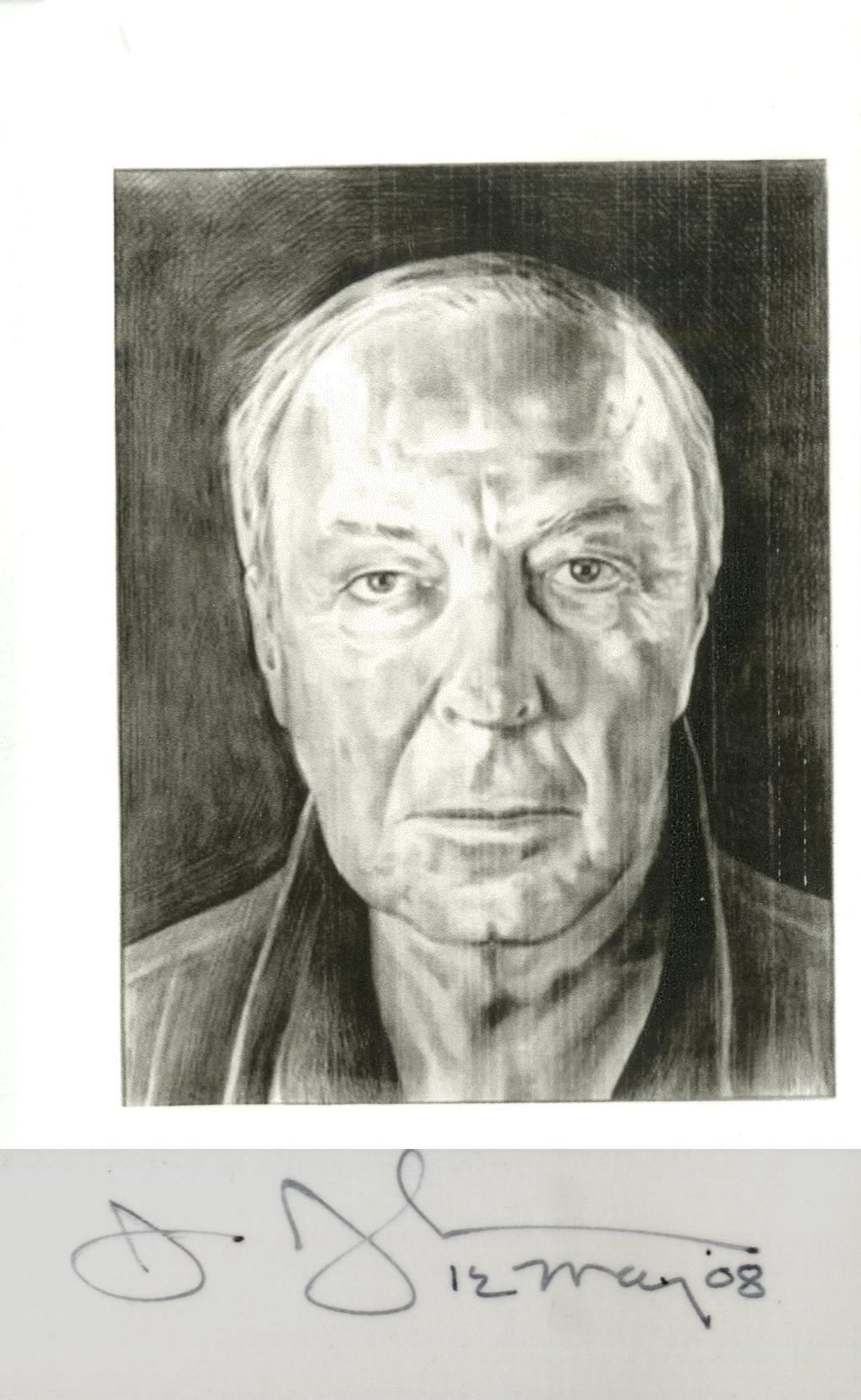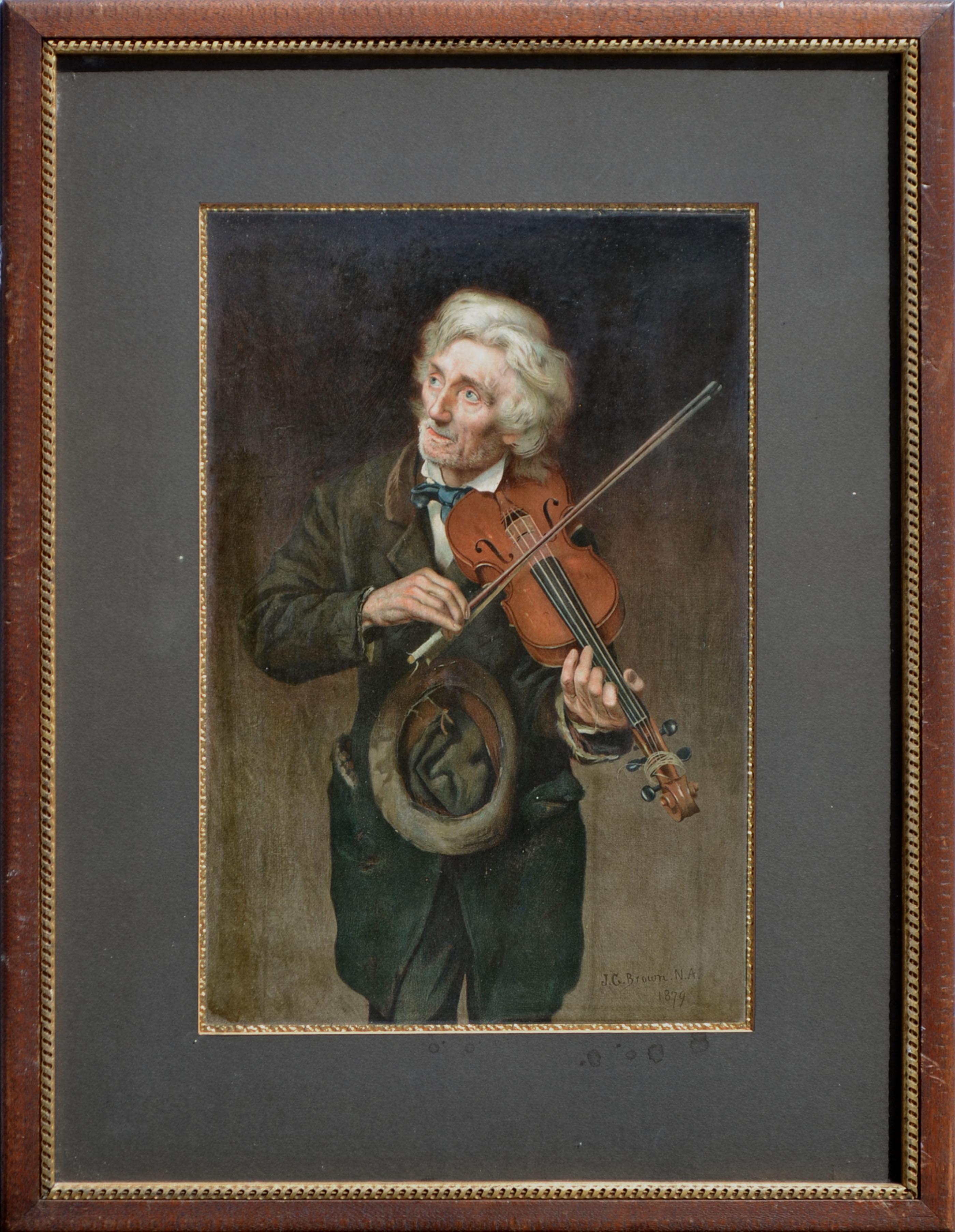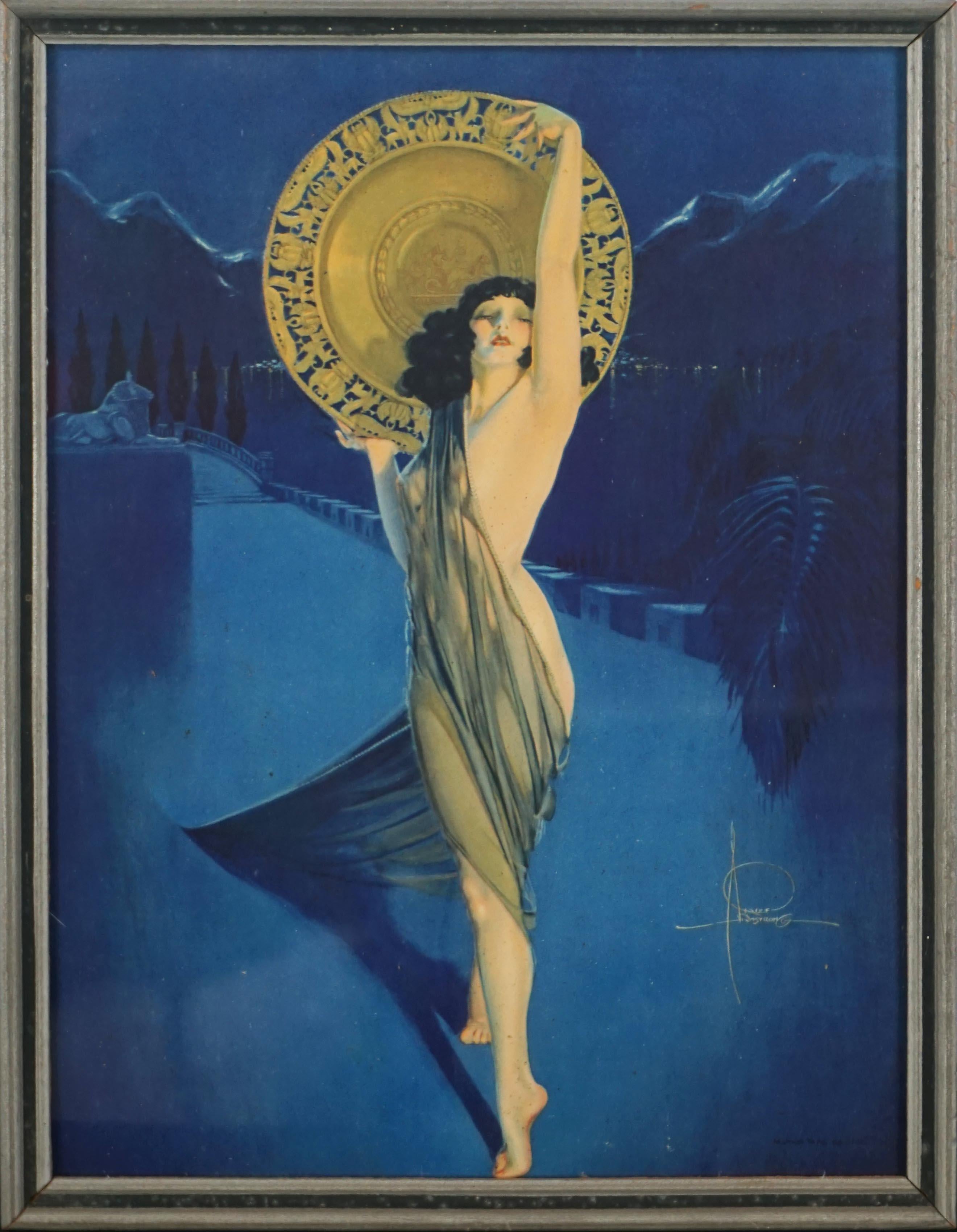Items Similar to Woman From Paris
Want more images or videos?
Request additional images or videos from the seller
1 of 10
Rudolph Carl GormanWoman From Paris 1979
1979
About the Item
This artwork, "Woman From Paris" 1979 (State I) is an original lithograph on creme Arches paper by renowned Navajo artist Rudolph Carl (R.C.) Gorman, 1932-2005. It is signed, dated and numbered 129/150 in pencil by the artist. The sheet size is 21.75 x 29 inches. It is in excellent condition, has never been framed, the colors are fresh and bright.
About the artist:
Born in Canyon de Chelly, Arizona and raised in a hogan on the Navajo Reservation, R.C. Gorman became one of the Southwest's best known late 20th-century artists. His signature works were Navajo women in a variety of poses. Many persons have been fascinated by the fact that he, an Indian artist, became famous in the white man's world with some calling him the "Picasso of Indian artists". Of this kind of attention, he said: "I wish people would quit pushing my being Indian. The only time I was interviewed as If I were a normal person was by the Jewish Press in Tucson. It was the first time I felt international and almost white". (Samuels 222)
His parents were Carl Nelson Gorman, artist, and Adella Katherine Brown. He abandoned the name "Rudolph" and signed his artwork with the initials R.C. He grew up during the Depression years, and he later said his first materials were "sand, rocks, and mud." His father, Carl, was one of the first Indian artists to depart from tradition and paint from his own personal expression, but R.C. seldom saw his father during his early childhood because he was away during the war,serving in the South Pacific as one of the Code Talkers---Navajos who used their language as secret code to foil the enemy.
Women, particularly his maternal grandmother, were primary influences and remain the focus of most of his paintings and prints. She spent much time with him during his childhood, and they herded sheep together, and he often drew on the rocks including a depiction of a nude woman that brought him a scolding. She told him the Navajo traditions and legends, sang the old songs, and taught him about plants and animals.
His mother, who had been sent away to government schools, directed him more towards the Anglo world and spoke to him only in English. She oversaw his education, and he first attended Chinle Public School. At age 10, he went to Flagstaff, shipped there in a cattle car with his mother, to work in the Navajo Ordnance. On the way, he saw his first painting at a stop at Hopiland at Moencopi Trading Post, and couldn't get it out of his mind.
After that he attended St. Michael's, a Catholic boarding school on the Navajo Reservation, from where he was expelled. Next he went to Ganado Presbyterian Mission School where well-known Southwest trader Don Lorenzo Hubbell had a trading post nearby and was a key figure in helping with the organizing of the school. A Dr. Clarence Salsbury was Director of Education and encouraged Gorman with his unique talents, which were recognized by many students and faculty members. Many years later, in 1978, The College of Ganado awarded Gorman an honorary Doctorate of Fine Arts, which he later said was the highest honor he had received.
He went to college in Flagstaff at Northern Arizona University, and in 1951 enlisted in the Navy for four years during the Korean War, but never quit drawing. In 1955, he re-enrolled at Northern Arizona University, studying literature and art, and illustrated for a school magazine.
A trip to Mexico and later a year long study scholarship really excited him, especially viewing murals by Orozco, Rivera, and Siqueiros, and sculpture by Zuniga because these artists were depicting realistic people. Their works were a catalyst for his decision to paint likenesses and create lithographs of people from his own heritage.
However, Gorman did not stay long on the Navajo reservation. In 1962, he left and would return only for visits. He moved to San Francisco where he had successful exhibitions of his work and earned the patronage of Charles and Ruth de Young Elkus, who encouraged young Indian talent.
In 1964, he went to Taos, New Mexico, and shortly after had an exhibition there in the Manchester Gallery. He returned to San Francisco where he went through a period of doing surreal landscapes but made frequent trips to Taos. He also had several joint exhibitions with his father, Carl Gorman, and in 1968 purchased the Manchester Gallery in Taos, renaming it the Navajo Gallery. From then it was his studio and home.
In the 1970s, he became a nationally known artist, and visitors to the Southwest were taking his work to all parts of the country. He also opened a gallery in Tubac, Arizona, about 40 miles south of Tucson, and conducted numerous workshops. During that decade, he first experimented with lithography, studying with Jose Sanchez in Mexico City. He did etchings, silk screen, sculpture, and ceramics and also began his pastel, watercolor wash full-bodied Indian women that became his trademark. Of this subject matter, he said: "I choose models who have full bodies--something you can put your two arms around and feel a real woman. I like the ample figure because it fills space softly" (Monthan, "R.C. Gorman, 29).
His daily work schedule has been one of arriving at his studio about 8:30 AM, working intensely, eating a long lunch with a glass of wine, returning to work for an hour or so, and then disappearing until the next day.
Gorman's work is in many permanent museum collections. A few include: The Museum of Indian Arts, San Fransisco, CA; The Heard Museum, Phoenix, AZ; Museum of Northern Arizona, Flagstaff, AZ; Philbrook Art Center, Tulsa, OK; U.S. Department of Interior, Washington, D.C.; Dallas Museum of Art, Dallas, TX; Indianapolis Museum of Art, Indianapolis, IN; and the New Mexico Museum of Fine Art.
- Creator:Rudolph Carl Gorman (1931 - 2005, American)
- Creation Year:1979
- Dimensions:Height: 21.75 in (55.25 cm)Width: 29 in (73.66 cm)Depth: 0.02 in (0.51 mm)
- Medium:
- Movement & Style:
- Period:
- Condition:
- Gallery Location:San Francisco, CA
- Reference Number:
About the Seller
5.0
Platinum Seller
These expertly vetted sellers are 1stDibs' most experienced sellers and are rated highest by our customers.
Established in 1999
1stDibs seller since 2017
683 sales on 1stDibs
Typical response time: 1 hour
- ShippingRetrieving quote...Ships From: San Francisco, CA
- Return PolicyA return for this item may be initiated within 7 days of delivery.
More From This SellerView All
- LilaBy Rudolph Carl GormanLocated in San Francisco, CAThis artwork, "Lila" 1981 (State I) is an original lithograph on heavy paper by renowned Navajo artist Rudolph Carl (R.C.) Gorman, 1932-2005. It is signed, dated and numbered 90/150 in pencil by the artist. With the blind stamp of the artist and printer. The sheet size is 17.75 x 22.5 inches. It is in excellent condition, has never been framed, the colors are fresh and bright. About the artist: Born in Canyon de Chelly, Arizona and raised in a hogan on the Navajo Reservation, R.C. Gorman became one of the Southwest's best known late 20th-century artists. His signature works were Navajo women in a variety of poses. Many persons have been fascinated by the fact that he, an Indian artist, became famous in the white man's world with some calling him the "Picasso of Indian artists". Of this kind of attention, he said: "I wish people would quit pushing my being Indian. The only time I was interviewed as If I were a normal person was by the Jewish Press in Tucson. It was the first time I felt international and almost white". (Samuels 222) His parents were Carl Nelson...Category
Late 20th Century Realist Figurative Prints
MaterialsPaper, Lithograph
- Woman With Tulip BowlBy Rudolph Carl GormanLocated in San Francisco, CAThis artwork, "Woman With Tulip Bowl" 1981 (State I) is an original lithograph on heavy paper by renowned Navajo artist Rudolph Carl (R.C.) Gorman, 1932-20...Category
Late 20th Century Realist Figurative Prints
MaterialsPaper, Lithograph
- Juchiteca's Platicando (Juchitecan Women Talking)By Francisco ZúñigaLocated in San Francisco, CAThis artwork titled "Juchiteca's Platicando (Juchitecan Women Talking) 1985 is an original colors lithograph on Wove paper by Costa Rican/Mexican artist Francisco Zuniga, 1912-1998. It is hand signed, dated and numbered 72/150 in pencil by the artist. The size is 22.75 x 30 inches. It is in excellent condition, 2 small pieces of hanging tape remaining on the back at the top edge of the sheet from previous framing. About the subject: This print, Juchitecas Platicando (Juchitecán Women Talking), depicts three statuesque women from the city of Juchiteca in the state of Oaxaca in southeastern Mexico. Juchiteca is a largely matriarchal society, in that women control the economy and hold positions of power. It is also home to a large Zapotec population, indigenous to the land that became Mexico. Francisco Zúñiga lived within the community of Juchiteca for a period of time and adopted the women of the area as one of the central motifs of his artwork, both on paper and in sculpture. Through his selective coloring, Zúñiga highlights the women’s clothing, including their recognizable huipiles or tunics, conveying the pride in locally made textile art About the artist: Internationally acclaimed sculptor and printmaker Francisco Zuñiga was born in Costa Rica. He studied drawing, stone sculpture, and engraving at the School of Fine Arts in San Jose. Later, in 1936, he studied stone carving at La Esmeralda in Mexico City. He was appointed to the faculty of La Esmeralda where he remained until his retirement in 1970. Zuniga's art reflects a love and respect for Central American people and traditions. In 1972, he created his first lithograph. As a complement to his emotionally powerful sculpture, Zuniga's prints articulate the sensitivity and sensuality of the human figure. He has been the recipient of numerous international prizes and awards. His work is exhibited frequently in prominent galleries throughout the world and may be found in the permanent collections of twenty-nine museums, including the Metropolitan Museum of Art in New York, the Los Angeles County Museum, the Mexican Museum in San Francisco, and the Phoenix Art Museum. In 1936, Francisco Zuniga left San Jose, Costa Rica, where he had studied drawing at the School of Fine Arts and worked as an assistant in his father's studio, a workshop which produced religious sculpture for the churches and convents in and around the city. His destination was Mexico City. It was from there that he would begin an illustrious career as a sculptor and draftsman. Zuñiga's exploration into the nuances of volume, in line and space, are demonstrated in this, the most complete exhibition of his work to be shown in more than a decade. Mexico City in 1936 was, even then, one of the major art centers of the Americas. As such it witnessed and participated in many of the frenzied and controversial art movements which reflected the political and intellectual climate of the first three decades of the twentieth century. Muralism, the graphic arts, the incorporation of in-ternational movements had produced an artistic climate, which would eventually attract to Mexico international artists and intellectuals such as Sergei Eisenstein, André Breton and Antonin Artaud. Then as now, Mexico City was a major world capital with the infrastructure necessary to exhibit and expose new aesthetic concepts. For all these reasons it was the most obvious destination of choice for Zuñiga. In Mexico he worked with the painter Manuel Rodríguez...Category
Late 20th Century Realist Figurative Prints
MaterialsLithograph
- Group of WorkersBy John Edward CostiganLocated in San Francisco, CAThis artwork titled "Group of Workers" 1943, is an original lithograph on paper by noted American artist John Edward Costigan, 1888-1972. It is hand signed and titled in pencil by th...Category
Mid-20th Century Realist Figurative Prints
MaterialsLithograph
- Classe 17By Théophile Alexandre SteinlenLocated in San Francisco, CAArtist: Theophile Alexandre Steinlen (Swiss, 1859-1923) Title: Classe 17 Year: 1917 Medium: Lithograph Edition: Numbered 61/100 in pencil Paper: Wove Image size: 10.5 x 14.25 inches ...Category
Early 19th Century Realist Figurative Prints
MaterialsLithograph
- Pichets, Tasse et CerisesLocated in San Francisco, CAThis artwork "Pichets, Tasse et Cerises" c.1970, is an original colors lithograph by French artist Frederic Vidalens, 1925-2004. It is hand signed and numbered 83/175 in pencil by th...Category
Late 20th Century Realist Figurative Prints
MaterialsLithograph
You May Also Like
- Sheep in Landscape (C. 558)By Henry MooreLocated in New York, NYSheep in Landscape (C. 558), 1974 Lithograph in colors, on wove paper 18 1/8 x 20 1/4 in. (46 x 51.4 cm) Edition of 50 Signed and numbered in pencil, lower marginCategory
1970s Realist Figurative Prints
MaterialsPaper, Lithograph
- At the sauna. 1960s, paper, lithography, 38x49 cmLocated in Riga, LVAt the sauna 1960s, paper, lithography, 38x49 cm Dzidra Bauma (1930) Dzidra Bauma works in watercolor technique. She paint figural compositions, portraits, landscapes, flowers and still life. She is one of the most productive watercolors artists, in first post-war generation - the number of jobs estimated in the thousands. Especially popular paintings with floral motifs. The artist about herself says: "I was born in Jelgava in 1930 in family of teachers. As a child, together with brother we loved to draw and made figures of clay or plasticine. In Riga elementary school №8 was a great art teacher, artist Alphonse Mihaylovskis, he also gave the first direction in art. Father let us buy a good brushes, watercolors, art books and publications related to the Latvian art. We also visited the exhibition. Enthusiastically I absorb all that read, studied the basic concepts...Category
1960s Realist Nude Prints
MaterialsLithograph, Paper
- Postcard of Phong Bui's portrait of Jasper Johns, hand signed by Jasper JohnsBy Jasper JohnsLocated in New York, NYJasper Johns and Phong Bui Offset lithograph card of portrait of Jasper Johns by Phong Bui (hand signed and dated by Jasper Johns), 2008 Card depicting a portrait of Jasper Johns by ...Category
Early 2000s Realist Portrait Prints
MaterialsPostcard, Lithograph, Offset, Ink
- Buffalo Bill 1899 Original Battle of San Juan Hill 1 sheet of a 24 sheet posterLocated in Southampton, NYThis rare original lithograph print is from 1899. It is one sheet of a huge 24 sheet poster that was created in 1899 to announce Buffalo Bills Wild West. The size of the complete 24 sheet poster would have been approx. 10 feet tall by 20 feet wide and would have been posted on barns and buildings in 1899 to promote Buffalo Bills Wild West before it would come to towns. This 1 sheet of the 24 sheet lithograph is in such good condition because it was found in the Lithographers draws of the print shop that created the poster. It is black and white because it was a proof that was used to create the final layout of the color poster. It indicates on the image that it is No. 2 Buffalo Bill San Juan Hill 1899, so it would have been the 2nd poster down on the left side of the large total image comprised of 24 separate sheets all unique to create the full image. You can see the two black printed lines on the left side indicate where the edge of the poster would have been. We have never seen a complete image of this rare 1899 poster. When we first acquired this rare proof over 20 years ago, we contacted the The Ringling Museum in Florida that houses a large Buffalo Bill poster...Category
1890s Realist Portrait Prints
MaterialsPaper, Ink, Lithograph
- Old Violinist - Late 19th Century Figurative LithographBy John George BrownLocated in Soquel, CAFinely detailed late 19th century chromo-lithograph portrait of a violinist street musician by John George Brown (British, 1831-1913). Many of Brown’s paintings were reproduced in lithography (Chromo-lithograpy), as is the case with the one offered here. Presented in a rustic antique Oak wood frame with giltwood fillet. Image, 15.63"H x 10.63"W. John George Brown was a British citizen and an American painter born in Durham, England. His parents apprenticed him to the career of glass worker at the age of fourteen, in an attempt to dissuade him from pursuing painting. He studied nights at the School of Design in Newcastle-on-Tyne while working as a glass cutter there between 1849 and 1852, and evenings at the Trustees Academy in Edinburgh while working at the Holyrood Glass Works between 1852 ad 1853. After moving to New York City in 1853, he studied with Thomas Seir Cummings at the National Academy of Design where he was elected a National Academician in 1861. Brown was the Academy’s vice-president from 1899 to 1904. Around 1855, he worked for the owner of the Brooklyn Glass Company, and later he married the daughter of his employer. His father-in-law encouraged his artistic abilities, supporting him financially, letting Brown pursue painting full-time. In 1866, he became one of the charter members of the Water-Color Society, of which he was president from 1887 to 1904. Brown became famous for his depictions of street urchins found of the streets of New York (bootblacks, street musicians, posy sellers, newsboys, etc.). Brown’s art is best characterized as British genre painting...Category
1870s Realist Portrait Prints
MaterialsPaper, Lithograph
- 1940s Lithograph of Pin Up Girl -- "The Enchantress" - GiftBy Rolf ArmstrongLocated in Soquel, CAWonderful example of iconic Pin Up girls of early 20th Century titled "The Enchantress" by famed Pin Up artist Rolf Armstrong (American, 1889-1960) Circa 1...Category
1940s Realist Nude Prints
MaterialsInk, Lithograph, Paper
Recently Viewed
View AllMore Ways To Browse
Mexican Woman Sculpture
Models Lunch
Vintage Trader
Woman In White Picasso
Vintage Car Parts
Cattle Sculpture
Indian Woman Print
Navajo Framed
Picasso 150
Vintage Foil Art Prints
Vintage International Womens Day Art
Southwest Ceramics
Signature Vintage Wine
Model T Car
1970s Silk Screen
Sheep Herder
Vintage Manchester Prints
Arizona Navajo




